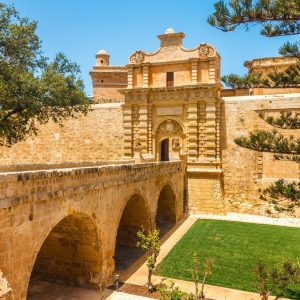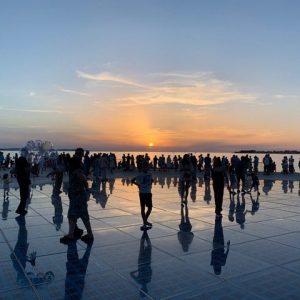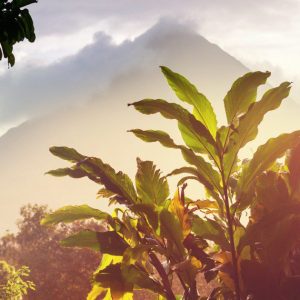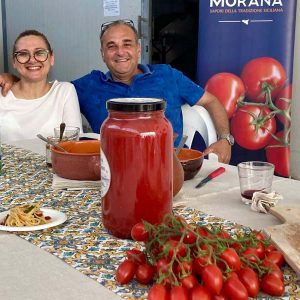Hacienda Teya, is a well known restaurant, inn, and banquet facility on the outskirts of the Yucatan’s capital city, Merida. Reconstructed from a crumbling, 19th century ruin, the hacienda comprises several small and large party rooms, an award winning restaurant and a stunning ballroom flanking an indoor pool. It’s owner, the late Don Jorge Carlos Cárdenas Gutierrez was ahead of his time visioning a new life for the property when he bought the ruin in 1974.
A central part of the hacienda’s current success has to do with daughter Veronica Cardenas who is the Director of Hacienda Teya. She spoke to me about the family business and in particular, her father and his mid-life crisis.
“There are two remarkable things about my father. Not only was he a pioneer in Mexico’s hacienda revival boom, but he was already over fifty years old when he launched his dream,” she said.
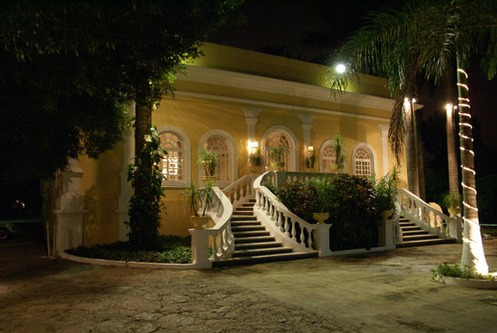 In the 1970s, reconstructing an abandoned hacienda was unheard of despite the supply being plentiful. These grand old plantation houses had been built by landowners enriched by the export of agave, the raw material for henequen, a product used to bind wheat into sheaths. With the expansion of farming westward in nineteenth-century America, the market for henequen was huge. By the first decade of the last century, there were more than a thousand grand haciendas within an eighty mile radius of Merida.
In the 1970s, reconstructing an abandoned hacienda was unheard of despite the supply being plentiful. These grand old plantation houses had been built by landowners enriched by the export of agave, the raw material for henequen, a product used to bind wheat into sheaths. With the expansion of farming westward in nineteenth-century America, the market for henequen was huge. By the first decade of the last century, there were more than a thousand grand haciendas within an eighty mile radius of Merida.
Though most of these properties fell into ruins when the industry collapsed, the dream of the golden age of the haciendados remained strong in local consciousness. So when Don Jorge decided to become a haciendado, it was possible to scoop up one of these relics for a song. Veronica remembers her father announcing his purchase. “The good news is that we are haciendados; the bad news is that we no longer have a car”.
A quarter of a century after Don Jorge’s mid-life crisis, Hacienda Teya is the place for both locals and foreigners to host grand events. Touring around the grounds it’s easy to buy into the idea, marry me in Merida! Or maybe for the mature traveler thinking of an anniversary party, it’s re-marry me in Merida. The hacienda is classic in its Spanish-influenced architecture, soaring arches, thick walls, heavy doors, and intricate tile floors. Each of the six guest rooms have preserved the sensual appeal of the dark wood beams set off against the high ceilings.
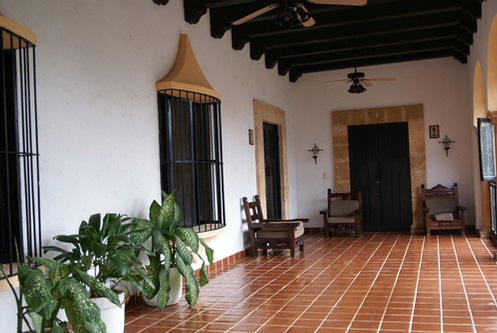 One of the oldest haciendas in the area, Hacienda Teya started life as a cattle ranch in 1683 then evolved into a henequen plantation and production facility two centuries later. But by the 1950s, like most of the haciendas around Merida, it was in ruins. The ceiling had collapsed. The grand entry stairs by the clock tower were rubble, understandably, given that generations of haciendados would ride their horse up to the covered porch before dismounting.
One of the oldest haciendas in the area, Hacienda Teya started life as a cattle ranch in 1683 then evolved into a henequen plantation and production facility two centuries later. But by the 1950s, like most of the haciendas around Merida, it was in ruins. The ceiling had collapsed. The grand entry stairs by the clock tower were rubble, understandably, given that generations of haciendados would ride their horse up to the covered porch before dismounting.
“Dad owned a small business making shelves, but once he took on the project of reconstructing the hacienda, it started taking up all of this time.”
“He first intended it to be a country club and offer shares for membership, then he changed his mind during the renovation on the ceiling. I suppose that the place grew on him, especially since he was putting so much of his own hand in fixing it up. When he decided to remain sole proprietor, he went out and planted twelve trees in a circle. These he told us, were for our children. Anyone can complete a construction job in a couple of years, but trees take a generation.”
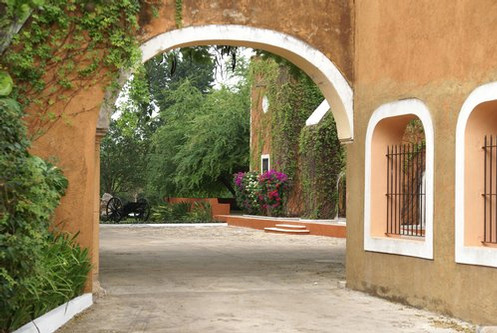 Besides the drama of the bougainvillea lined gardens, a delight to bridal parties and their photographers, the sparkling elegance of the French inspired mirrored ballroom with a swimming pool at its center moves prospective clients to close the deal. Originally a machinery house, a gigantic hole in the floor remained when the iron scrapers and henequen thrashing equipment were removed. Jorge’s idea to fill the hole with a pool was met, like most of his ideas, with a collective, “Are you crazy?” Admittedly, indoor pools in tropical Merida were as uncommon as the visionary Jorge himself.
Besides the drama of the bougainvillea lined gardens, a delight to bridal parties and their photographers, the sparkling elegance of the French inspired mirrored ballroom with a swimming pool at its center moves prospective clients to close the deal. Originally a machinery house, a gigantic hole in the floor remained when the iron scrapers and henequen thrashing equipment were removed. Jorge’s idea to fill the hole with a pool was met, like most of his ideas, with a collective, “Are you crazy?” Admittedly, indoor pools in tropical Merida were as uncommon as the visionary Jorge himself.
Hacienda Teya is a bright light on the party circuit of Merida, and Jorge lived to see other luminaries such as Hilary Clinton stroll through its grounds. And while Merida’s party-goers can be thankful for Jorge’s mid-life crisis, Hacienda Teya is more than an artful photographic backdrop and fine restaurant. It’s a monument to what can be accomplished when you only get started at 50 years old!
More about Carolann
Carolann Moisse writes her own blog www.maturetraveler.blogspot.com where you can read about her travel experiences.
She tells her own story of finding the travel bug at a later stage in life:
“For those of us who have not grown up with elephants, it seems unbelievable that you can’t hear an elephant approaching you from behind, although as I learned in Cambodia, you might sense it.
In 1998, I had been working in an office for nearly fifteen years. The speed of business was accelerating, as by then a computer was on every desk. I didn’t see the elephant at that time. Frankly, I wasn’t looking for one on Bay Street. But I sensed something big behind me.
One morning I overheard a lawyer talking about making her escape. I was surprised by her positive attitude. Everything was great, the job, the latte, clients, and the weather. I wondered if what I was feeling at the time – exhaustion and a slow melt of enthusiasm – could be similarly addressed by that kind of a big change. So I convinced my employer that my going off the payroll was a good thing. My near-retired husband Dan bought into the plan in a nanosecond and we both started saving vigorously for a future exit.
By the time my leave came due, and Dan had taken an early retirement, I realized that I had spent all of my adult life in an office.. No gap year. No break longer than the usual vacation period. No maternity leave. So when the elephant caught up with me, I got my first travel lesson. He told me, “Take off”.
Ten years later, I continue to travel having taken career decisions to permit more extended travel (read: don’t care about the glass ceiling). Dan and I are always learning more about the world and how to observe it without being intrusive, offending people, or judgemental. We’re also learning a thing or two about being frugal and traveling light. Such lessons are different for us at our time of life, than for young people travelling in a gap year”.
Photos courtesy of Dan Cooper

